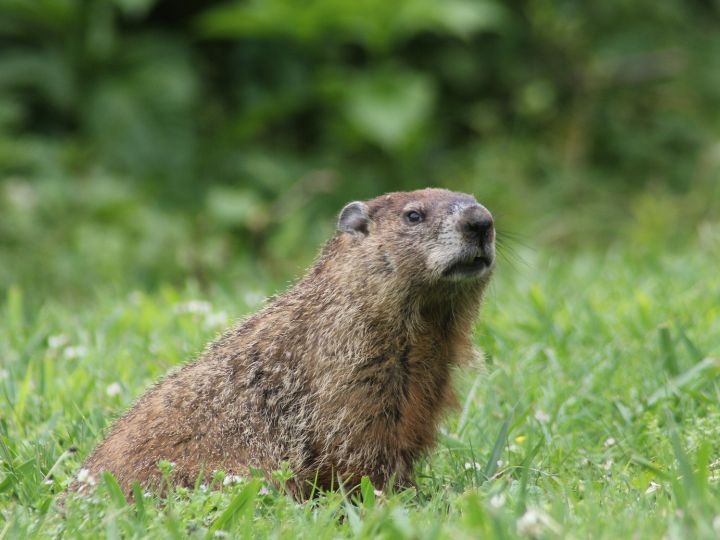When it comes to understanding the preferences of groundhogs, it’s essential to consider their natural diet and habitat. Groundhogs, also known as woodchucks, are native to North America and primarily inhabit grasslands, meadows, and woodland areas. As herbivores, they feed on a variety of plants, fruits, and vegetables to obtain sufficient nutrients for their survival.
A common question that arises is whether groundhogs like oranges or not. Oranges are a citrus fruit that can be found in many households, making it a point of curiosity for those who may encounter groundhogs in their yards. While groundhogs prefer leafy greens, vegetables, and some fruits, they do not typically consume oranges as a part of their natural diet. The strong citrus scent can be unappealing to them and serves as a deterrent rather than an attractant.
Nonetheless, an occasional encounter with oranges might occur if a groundhog stumbles upon them while foraging for food. However, it is important to remember that their diet mainly consists of plants and other vegetation found in their natural habitat. Understanding the dietary habits of groundhogs not only helps answer this question but also contributes to potential prevention methods for those looking to deter these creatures from their property.
What are Groundhogs
Groundhogs, also known as woodchucks or whistle-pigs, are large rodents belonging to the marmot family (scientifically known as Marmota monax). They are native to North America, inhabiting a range from the Eastern United States to Canada. Groundhogs are well-known for their burrowing habits, creating complex and extensive network of tunnels.
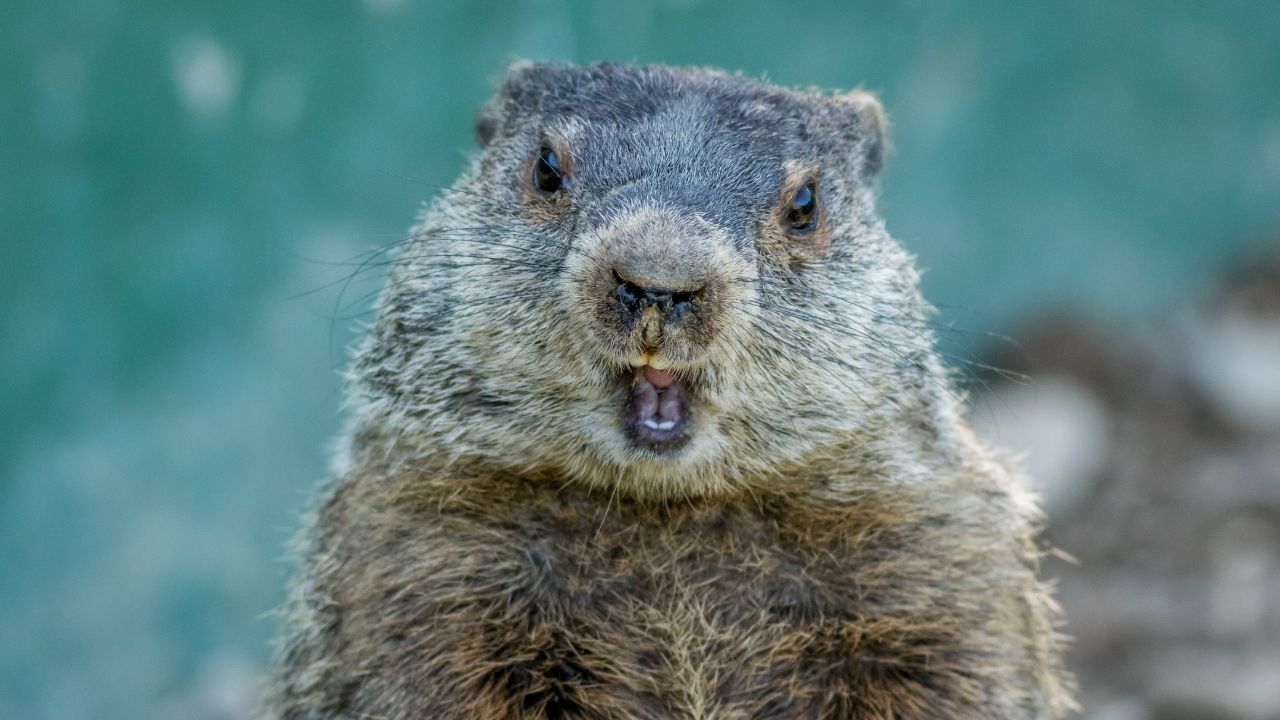
Physical characteristics of groundhogs include:
- Weight: 5-10 pounds
- Length: 16-27 inches
- Fur color: Brownish-gray
- Stocky body with short legs
Groundhogs are mostly herbivorous, feeding on various plants such as grasses, fruits, and vegetables. They are also selective in their diet, consuming the most nutritious part of the plant when available. Their typical diet includes:
| Food Sources | Examples |
|---|---|
| Leaves | Clover, dandelion |
| Fruits | Berries, apples |
| Vegetables | Carrots, beans, peas |
| Tree bark | Young trees and branches |
| Insects | Grasshoppers, snails (rarely) |
One notable behavior of groundhogs is their ability to hibernate during the winter season. They store fat during the summer and autumn months, which they then use for sustenance during hibernation. Hibernation periods can last up to six months depending on the region and environmental factors.
Groundhogs are generally solitary creatures, with one groundhog per burrow. They mate in the early spring, with females giving birth to a litter of 2-6 pups. They are also known for their excellent digging skills, using their sharp claws to excavate elaborate burrows consisting of multiple entrances and chambers. These burrows not only serve as homes but also as protection from predators such as foxes, hawks, and coyotes.
Orange’s Nutritional Profile
Oranges are a popular fruit known for their high vitamin C content. They are also rich in other essential nutrients such as fiber, calcium, and potassium. Citrus sinensis, the scientific name for the sweet orange, offers numerous health benefits to humans but may not be a suitable food for groundhogs.
Oranges consist mainly of carbohydrates and water, with a small amount of protein. A medium-sized orange (131g) contains approximately:
- 62 calories
- 15.4g carbohydrates, mainly from natural sugars and dietary fiber
- 1.2g protein
- 250mg potassium
- 60mg calcium
- Approximately 6% and 5% of the daily value for an adult respectively.
- 70 mg of vitamin C
- Nearly 100% of the daily value for an adult
Apart from the nutrients mentioned above, oranges also contain small amounts of other essential vitamins and minerals such as vitamin A, vitamin B6, magnesium, and phosphorus. Additionally, they are a good source of antioxidants and bioactive compounds, such as flavonoids, which contribute to their health benefits.
Keep in mind that these nutritional facts apply to humans, and groundhogs may have different dietary requirements. While oranges can provide a wide range of nutrients, it is crucial to consider whether these nutrients are suitable for a groundhog’s diet and well-being.
Groundhog’s Dietary Habits
Groundhogs, also known as woodchucks or whistle-pigs, belong to the family of rodents called Sciuridae. These animals primarily feed on vegetation, which makes them herbivores by nature.
Their diet mainly consists of:
- Clover
- Grass
- Dandelion
- Vegetables
During the warm months, groundhogs usually feed in the early morning and late afternoon. Their foraging patterns change with the season, and they adapt by consuming different types of plants accordingly.
| Season | Plant Types Consumed |
|---|---|
| Spring | Grass, Leaves |
| Summer | Fruits, Vegetables |
| Fall | Seeds, Nuts |
It is important to note that while groundhogs are strict herbivores, there have been rare instances where they were observed to eat insects or grubs. However, this behavior is not common.
As for the question of oranges, groundhogs do not tend to actively seek out this particular fruit. Their preference for fruits is generally for those which are native to their habitat, such as berries and apples. Oranges may not be a natural part of their diet in the wild.
However, if a groundhog encounters an orange, it may consume it out of curiosity or hunger. Keep in mind that feeding groundhogs human food, including oranges, is not recommended. It can lead to an unhealthy diet and potential issues with their digestive system.

Consumption of Fruits by Groundhogs
Groundhogs, also known as woodchucks or whistle pigs, are primarily herbivores. Their diet consists mainly of grasses, clovers, and other forms of vegetation. However, groundhogs do consume fruits occasionally, alongside their plant-based diet.
Oranges are not a typical fruit consumed by groundhogs, even though they may discover and taste one if found in their natural environment. The primary reason behind this preference is that oranges are not native to regions where groundhogs inhabit. Groundhogs are most commonly found across North America, in woodland, grassland, and suburban areas, while oranges are native to regions in Asia.
When we talk about the consumption of fruits by groundhogs, they are more likely to consume fruits native to their environment. Some common fruits in their diet include:
- Apples
- Blackberries
- Raspberries
- Strawberries
- Blueberries
Fruits generally constitute a smaller portion of their diet in comparison to plants. The table below showcases some of the different flora that groundhogs eat.
| Plants | Fruits |
|---|---|
| Clover | Apples |
| Dandelion | Blackberries |
| Grass | Raspberries |
| Plantain | Strawberries |
| Wild lettuce | Blueberries |
It is worth noting that while groundhogs can consume fruits like apples and berries, their intake should be moderated. An excessive fruit diet may adversely affect the groundhog, leading to health issues such as obesity and dental problems. In summary, although groundhogs occasionally consume fruits, oranges are not a typical choice due to regional availability and geographical factors.
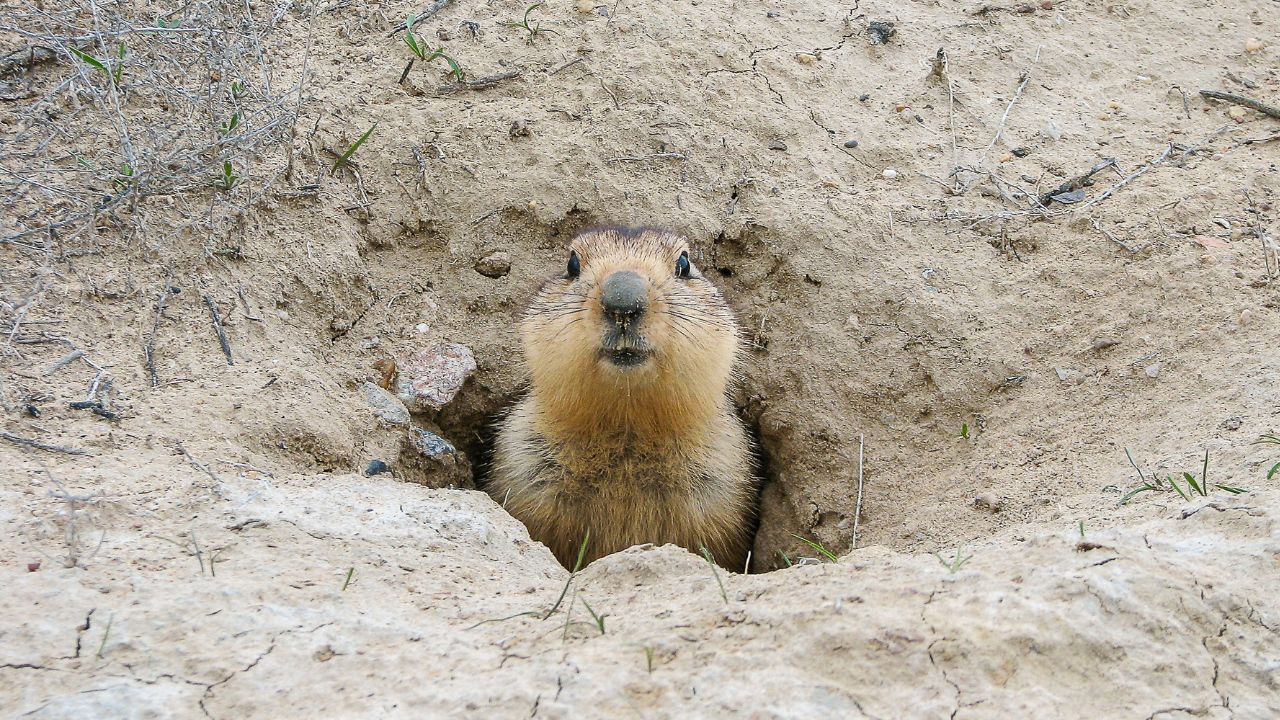
Potential Risks and Benefits
Groundhogs, also known as woodchucks, are primarily herbivorous creatures that feed on a wide variety of plant material. Although they are known to occasionally consume small insects and snails, their main diet consists of leaves, grasses, and fruits. In this section, we will discuss the potential risks and benefits of offering oranges to groundhogs in terms of nutritional value, health impacts, and behavioral consequences.
Nutritional Aspects
Oranges provide a good source of various nutrients, including vitamin C, dietary fiber, and natural sugars, which can be beneficial for many animals. However, it is important to recognize the specific nutritional requirements of groundhogs. Here is a brief comparison of the nutrient content of oranges and the typical diet of groundhogs:
| Nutrient | Orange | Groundhog’s Typical Diet |
|---|---|---|
| Vitamin C | High | Low |
| Dietary Fiber | Moderate | High |
| Natural Sugars | High | Low |
While there is no direct harm in offering groundhogs oranges as an occasional treat, it is essential to ensure that their primary diet remains focused on the plants and fruits more suited to their natural eating habits.
Health Impacts
Digestive Issues: An excess consumption of oranges could lead to digestive issues in groundhogs, as their digestive systems are better suited for processing plant material like grasses and leaves. The high natural sugar content found in oranges may cause diarrhea or stomach discomfort if consumed in large quantities.
Dental Health: The citric acid found in oranges can potentially harm the dental health of groundhogs. Prolonged exposure to citric acid can erode tooth enamel, leading to dental issues such as cavities or gum disease. However, it is worth mentioning that the occasional consumption of oranges by groundhogs is unlikely to have significant long-term dental consequences.
Behavioral Consequences
Introducing oranges to groundhogs may lead to changes in their feeding and foraging behavior. By offering a readily accessible and tasty food source, groundhogs may become dependent on human handouts, which could negatively impact their ability to find food on their own. This could also lead to an increase in human-groundhog interactions, which may not always be positive.
In summary, there are both potential risks and benefits associated with offering oranges to groundhogs. While the occasional orange may serve as a tasty treat and provide some nutritional benefits, groundhogs should primarily be consuming their natural diet of plant material. As always, it is essential to exercise caution and respect for wildlife by carefully considering the potential consequences of any new feeding habits and making informed choices.
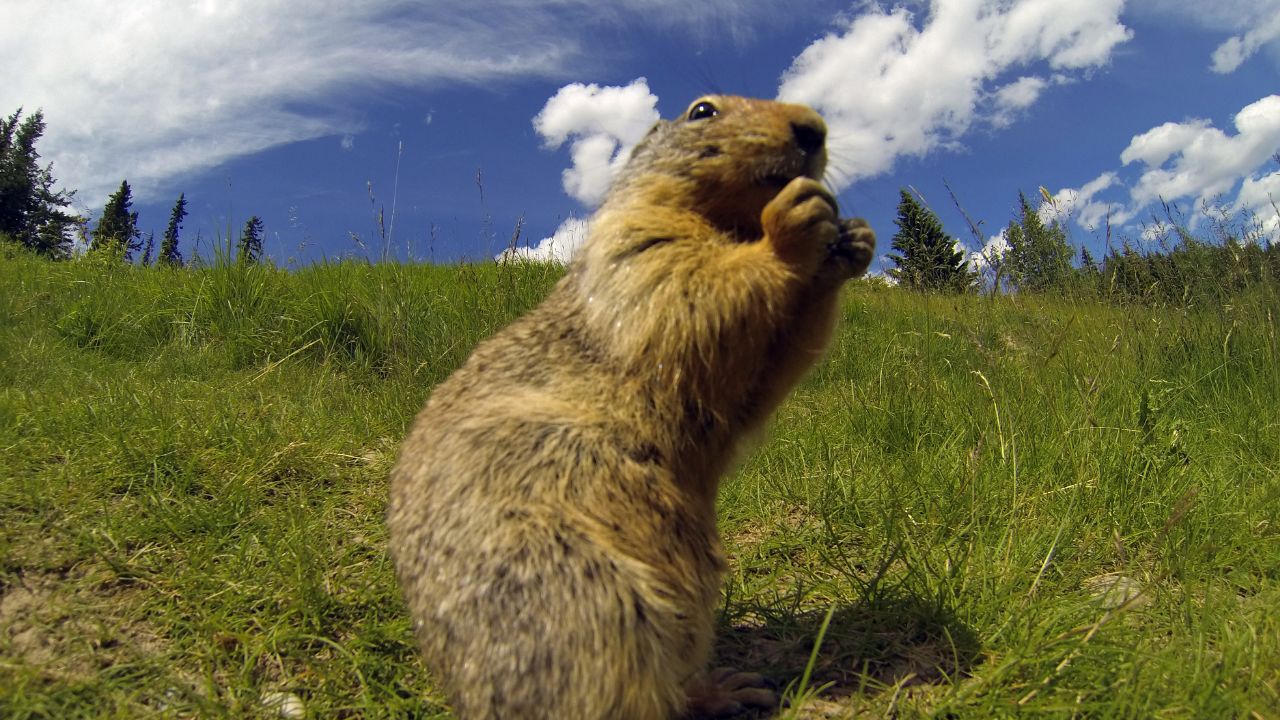
Difference with Other Rodents
Groundhogs, also known as woodchucks, are rodents that belong to the marmot family. They are unique when compared to other rodents in several aspects, such as their diet and behavior.
When it comes to diet, groundhogs are primarily herbivores, eating a variety of plants and grasses. Unlike mice, rats, and squirrels, which often consume seeds, nuts, and fruits, groundhogs typically feast on greens and stems:
- Groundhog diet:
- Plants, grasses, and stems
- Other rodent diet:
- Seeds, nuts, fruits
As for the question of whether groundhogs like oranges, this remains unclear. While fruit consumption is not a primary preference in their diet, it cannot be ruled out entirely as different groundhogs may have varying tastes.
In terms of behavior, groundhogs are solitary creatures, preferring to live and nest in burrows they dig themselves. Other rodents, such as rats and mice, are more social beings, often establishing communal living spaces. The table below highlights this difference:
| Rodent | Social Behavior |
|---|---|
| Groundhog | Solitary |
| Other Rodents | Social |
Furthermore, groundhogs are diurnal, meaning they are active during the day and sleep at night, whereas many other rodents are nocturnal. This difference can affect the type of food sources they prefer as well as their overall lifestyle.
In conclusion, while there are some similarities among rodents, groundhogs display distinct differences in dietary preferences and behavior. Their primary consumption of plants, grasses, and stems sets them apart from other rodents that have a taste for seeds, nuts, and fruits.
Preference for Oranges
Groundhogs, also known as woodchucks, are primarily herbivores. They are known to feed on a range of vegetation, fruits and roots of plants. There are several factors that affect groundhog’s preferences for food, which include variety, location, and quality of their food options. In this section, we discuss the likelihood of groundhogs to eat oranges and whether they favor these fruits in their diet.
Oranges are a type of fruit that may catch a groundhog’s attention due to its sweetness and bright color. However, groundhogs do not particularly favor oranges over other fruits or food options they commonly consume. To provide a clear picture, let’s evaluate their typical diet:
- Vegetation: Young leaves and green shoots such as clover, alfalfa, dandelion and plantain.
- Fruits: Strawberries, blackberries, cherries, and blueberries.
- Roots/crops: Carrot, radish, potatoes, and turnips.
In rare cases where oranges are available to groundhogs, they might consume them as part of their diverse diet. Nonetheless, oranges are not a common part of their diet due to their geographic location, natural habitat, and food availability. Citrus fruits such as oranges are primarily grown in subtropical regions, while groundhogs are prevalent in the Eastern United States and Canada.
Additionally, the strong smell and taste of citrus fruits might be less appealing to groundhogs as opposed to other fruits. In comparison to oranges, they have a greater preference for smaller, softer, and less acidic fruits like berries. Since groundhogs prefer easily accessible and less effort-consuming fruits, oranges are less likely to be part of their usual dining choices.
In conclusion, while groundhogs are versatile in their eating habits and could eat oranges if available, it is evident that they do not have a strong preference for them. They are more likely to incline towards other fruits and vegetation that are more commonplace in their natural habitat.
How to Use Oranges to Attract Groundhogs
Before diving into the use of oranges as a means of attracting groundhogs, it is important to note that groundhogs are primarily herbivores with a preference for plants, fruits, and vegetables. While there isn’t concrete evidence of their fondness for oranges specifically, it is worth giving it a try as they do enjoy a variety of fruits.
To use oranges effectively in luring groundhogs, follow these simple steps:
- Select ripe oranges: Choose vibrant and ripe oranges, as the enticing smell is more appealing to groundhogs. Overripe oranges can also work, but may attract other unwanted animals.
- Cut the oranges: To make it easier for groundhogs to consume oranges, cut them into smaller pieces or slices. This will expose the fruit, making it more visually enticing to groundhogs and giving off a stronger aroma.
- Place the pieces strategically: Pick spots around the garden or near the groundhog’s burrow. Place the orange pieces in easily accessible locations to maximize their chances of being discovered. Avoid placing them near any traps or devices that may scare the groundhogs away.
When setting up an area with oranges, be sure to monitor the results. Keep a close eye on the fruit for any signs of groundhog activity, such as partially eaten pieces or nearby burrow openings. If you notice these signs, it may indicate that oranges are a successful lure for the animals.
| Locations | Tips |
|---|---|
| Garden borders | Attract groundhogs at the edges of your garden |
| Near burrows | Lure groundhogs from their hiding spots |
| Open spaces | Make it easier for groundhogs to find the fruit |
While using oranges as a means of attracting groundhogs can be experimental, it is worth giving it a try considering other animals’ success in consuming fruit. Be aware of potential drawbacks, including unwanted pests. Modify your approach as needed to find the perfect balance.
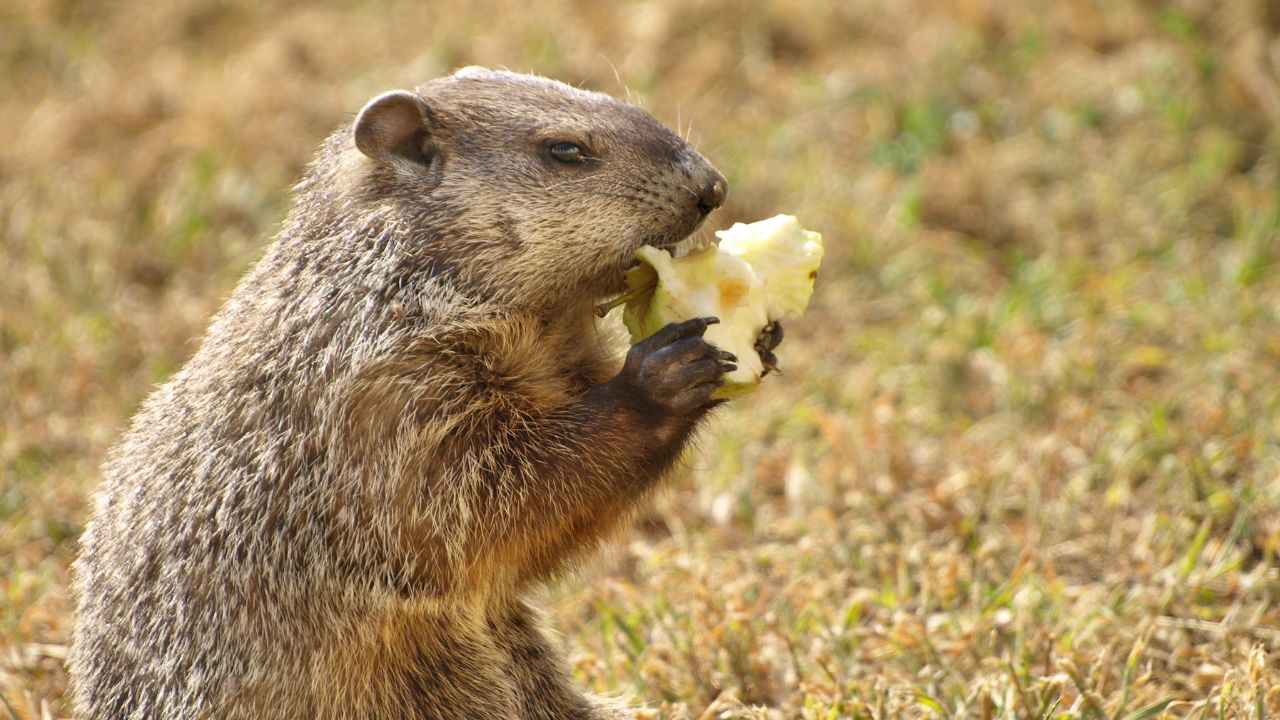
Conclusions and Recommendations
Groundhog Preferences:
After conducting thorough research on the subject, it can be said that groundhogs exhibit a preference for certain types of foods over others. Their diet primarily consists of plants, vegetables, and some fruits. However, when it comes to their preference for oranges, there is limited information available.
Potential Effects:
It is crucial for groundhog caretakers or observers to provide balanced and suitable nutrition for these animals when interacting with them. Introducing oranges into their diet may not be harmful, but offering more natural and familiar options for these animals is advisable. Groundhogs are known to consume fruits such as:
- Apples
- Berries
- Cherries
Table 1: Fruits commonly consumed by groundhogs
| Fruits | Nutrients | Benefits |
|---|---|---|
| Apples | Fiber, Vitamin C | Digestion, Immune Support |
| Berries | Antioxidants, Vitamins | Heart Health, Immune Support |
| Cherries | Vitamin C, Potassium | Muscle Function, Bone Health |
Recommendations:
For those closely interacting with groundhogs, it is essential to adhere to the following recommendations:
- Focus on providing a diet that consists mainly of plants, vegetables, and fruits native to their habitats.
- Limited or occasional introduction of new food items, such as oranges, can be considered, but avoid any over-dependence on them.
- Increase the variety of fruits in their diet based on the season and availability.
- Consult a wildlife expert or veterinarian before making significant changes to their diet to ensure optimal health.
By following these recommendations, one can ensure the well-being of groundhogs and support their overall health.
Frequently Asked Questions
Becky is a fervent wildlife enthusiast and pet care expert with a diploma in canine nutrition. Her love for animals stretches beyond the domestic, embracing the wild tapestry of global fauna. With over a decade of experience in animal welfare, Becky lends her expertise to OutlandishOwl through insightful articles, captivating wildlife information, and invaluable guidance on pet nutrition. Her work embodies a deep commitment to understanding the intricate lives of animals and a passion for educating others on sustaining natural habitats. Becky's hands-on conservation efforts and her knack for translating complex dietary science into practical pet feeding tips make her an indispensable voice for creatures great and small.

